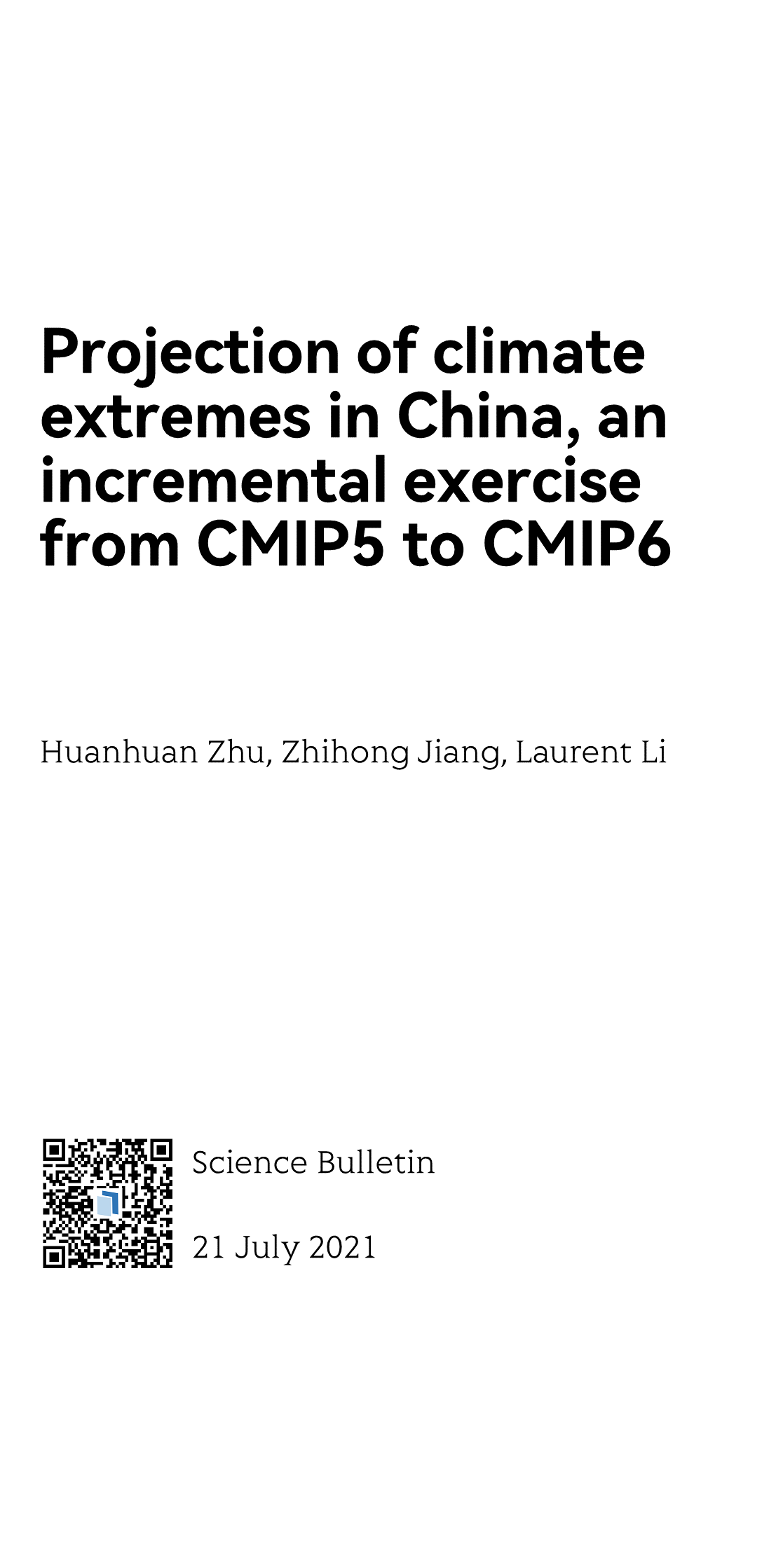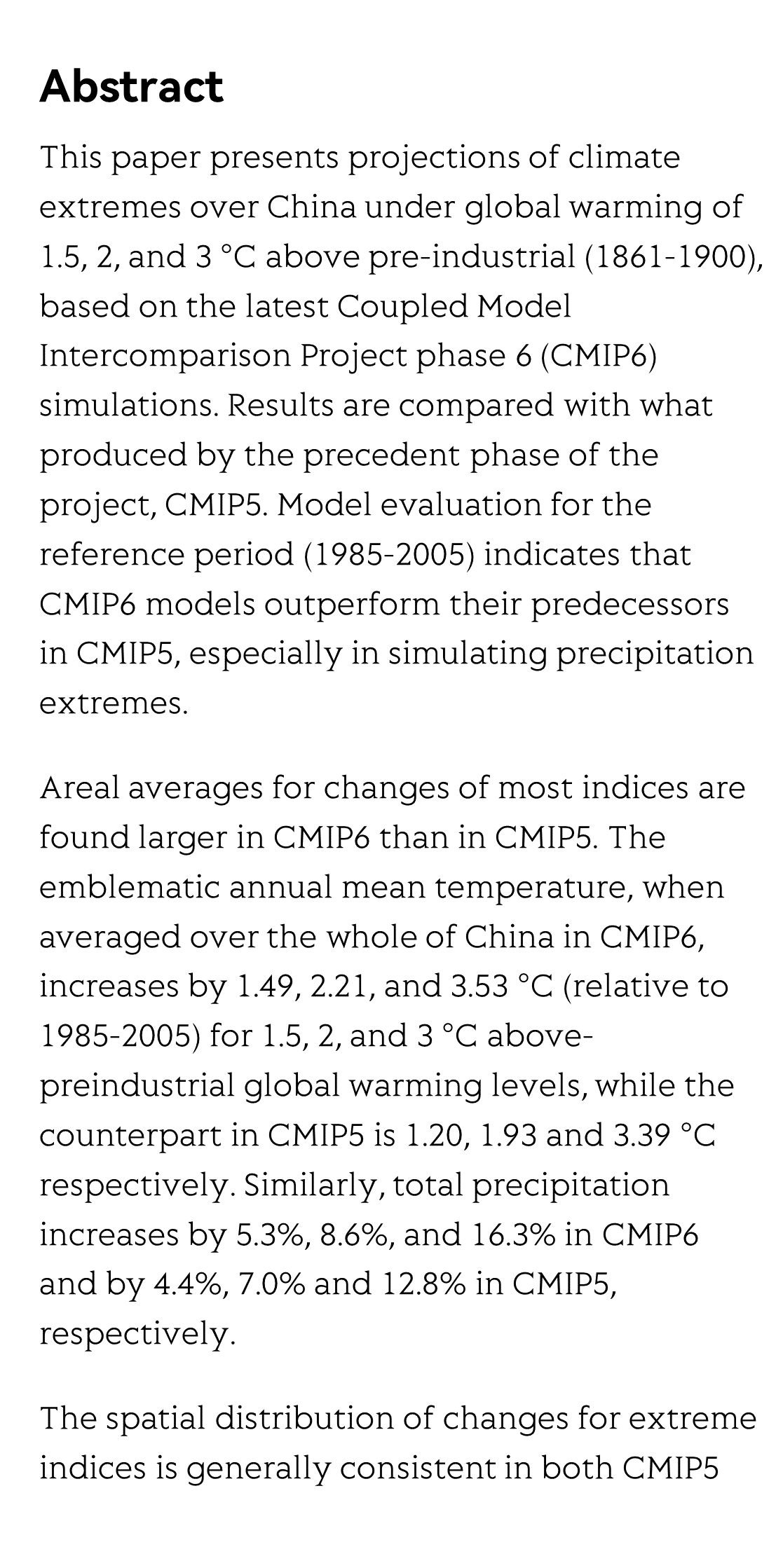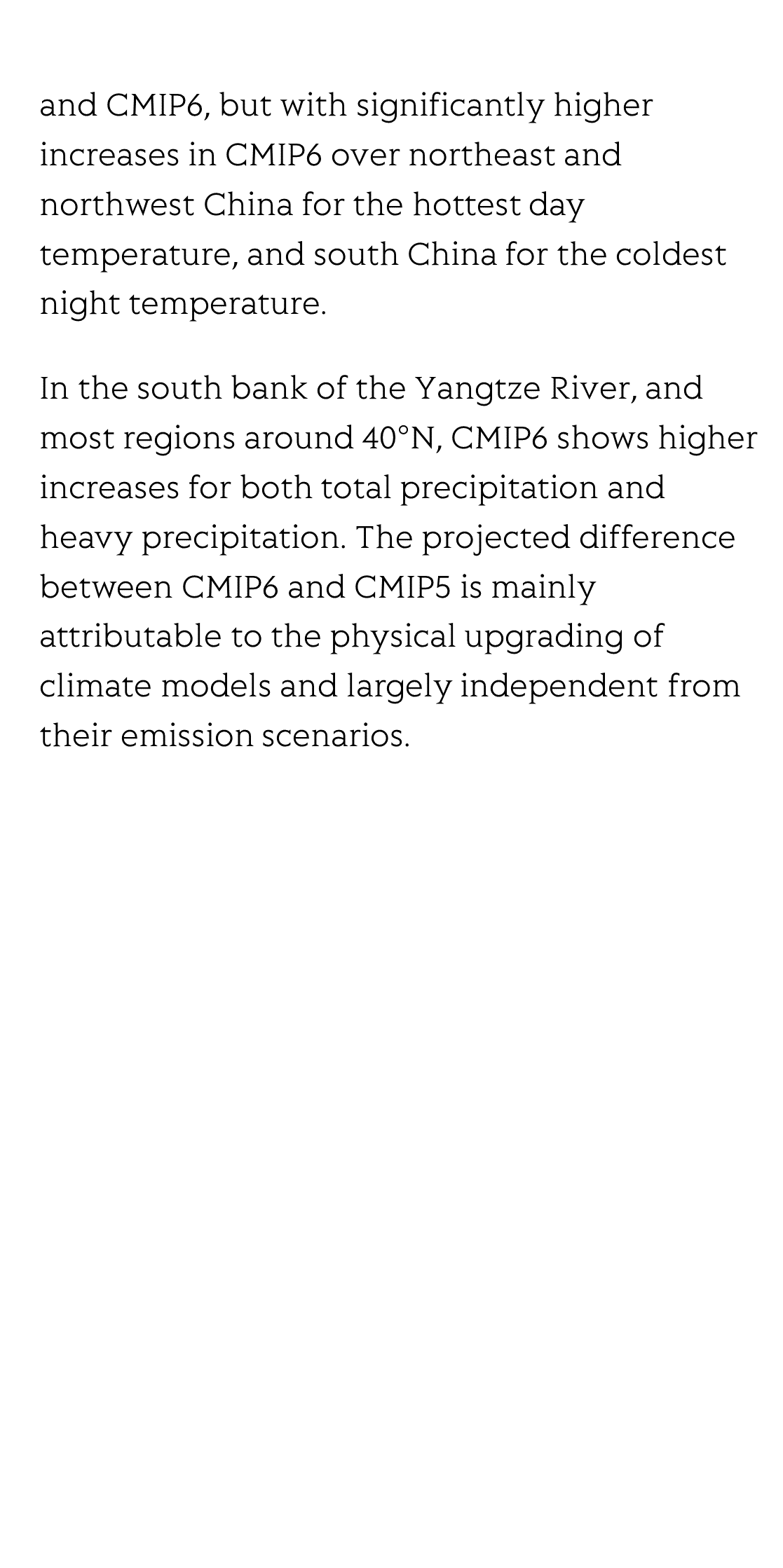(Peer-Reviewed) Projection of climate extremes in China, an incremental exercise from CMIP5 to CMIP6
Huanhuan Zhu 朱欢欢 ¹ ², Zhihong Jiang 江志红 ² ³, Laurent Li 李肇新 ⁴
¹ Joint International Research Laboratory of Climate and Environment Change, Nanjing University of Information Science and Technology, Nanjing 210044, China 南京信息工程大学 气候与环境变化国际合作联合实验室
² Collaborative Innovation Center on Forecast and Evaluation of Meteorological Disaster, Nanjing University of Information Science and Technology, Nanjing 210044, China 南京信息工程大学 气象灾害预报预警与评估协同创新中心
³ Key Laboratory of Meteorological Disaster of Ministry of Education, Nanjing University of Information Science and Technology, Nanjing 210044, China 南京信息工程大学 气象灾害教育部重点实验室
⁴ Laboratoire de Météorologie Dynamique, CNRS, Sorbonne Université, Ecole Normale Supérieure, Ecole Polytechnique, Paris 75005, France
Science Bulletin, 2021-07-21
Abstract
This paper presents projections of climate extremes over China under global warming of 1.5, 2, and 3 °C above pre-industrial (1861-1900), based on the latest Coupled Model Intercomparison Project phase 6 (CMIP6) simulations. Results are compared with what produced by the precedent phase of the project, CMIP5. Model evaluation for the reference period (1985-2005) indicates that CMIP6 models outperform their predecessors in CMIP5, especially in simulating precipitation extremes.
Areal averages for changes of most indices are found larger in CMIP6 than in CMIP5. The emblematic annual mean temperature, when averaged over the whole of China in CMIP6, increases by 1.49, 2.21, and 3.53 °C (relative to 1985-2005) for 1.5, 2, and 3 °C above-preindustrial global warming levels, while the counterpart in CMIP5 is 1.20, 1.93 and 3.39 °C respectively. Similarly, total precipitation increases by 5.3%, 8.6%, and 16.3% in CMIP6 and by 4.4%, 7.0% and 12.8% in CMIP5, respectively.
The spatial distribution of changes for extreme indices is generally consistent in both CMIP5 and CMIP6, but with significantly higher increases in CMIP6 over northeast and northwest China for the hottest day temperature, and south China for the coldest night temperature.
In the south bank of the Yangtze River, and most regions around 40°N, CMIP6 shows higher increases for both total precipitation and heavy precipitation. The projected difference between CMIP6 and CMIP5 is mainly attributable to the physical upgrading of climate models and largely independent from their emission scenarios.
Flicker minimization in power-saving displays enabled by measurement of difference in flexoelectric coefficients and displacement-current in positive dielectric anisotropy liquid crystals
Junho Jung, HaYoung Jung, GyuRi Choi, HanByeol Park, Sun-Mi Park, Ki-Sun Kwon, Heui-Seok Jin, Dong-Jin Lee, Hoon Jeong, JeongKi Park, Byeong Koo Kim, Seung Hee Lee, MinSu Kim
Opto-Electronic Advances
2025-09-25
Dual-frequency angular-multiplexed fringe projection profilometry with deep learning: breaking hardware limits for ultra-high-speed 3D imaging
Wenwu Chen, Yifan Liu, Shijie Feng, Wei Yin, Jiaming Qian, Yixuan Li, Hang Zhang, Maciej Trusiak, Malgorzata Kujawinska, Qian Chen, Chao Zuo
Opto-Electronic Advances
2025-09-25







